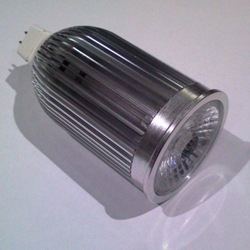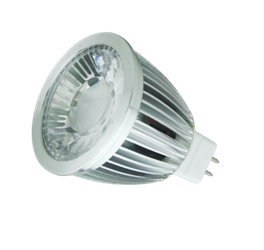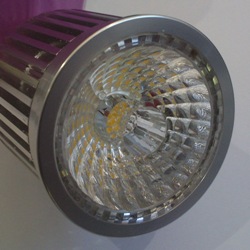 Loading... Please wait...
Loading... Please wait...- About Us
- LED Flood Lights
-
LED Lighting Projects
- Tennis Court LED Lighting Projects & Upgrades
- Netball Court LED Lighting - Case Studies & Projects
- Sporting Oval & Sports Field LED Lighting - Projects & Examples
- Lawn Bowls LED Lighting Projects & Upgrades
- General Area and Security LED Lighting - Projects & Applications
- Factory and Warehouse LED Lighting Projects & Applications
- Industrial LED Lighting Applications and Projects
- Help & Information
- Blog
- Contact Us
- Home
- Help & Information
- LED Buying Guide
- Understanding LED Lighting
- LED Light Bulb Life Time
- LED Light Bulb Passive Cooling Methods
LED Light Bulb Passive Cooling Methods
Aluminium Finned Heat SinksPassive cooling methods using aluminium fined heat sinks have been used in solid state electronics for decades without any problems with cooling. The majority of manufacturers have used passive based cooling designs using aluminium fins or more recently ceramic heat sink materials which conduct heat away from the LED chip. The heat sink material is usually clearly observable from the front or the back of the LED light bulb giving it a distinctive look from its incandescent equivalent. Some multi-fin designs are shown below. Many manufacturers embrace the use of the heat sink by using it as an architectural lighting feature and usually customers share the views and find the appearance modern and attractive. Multi-fin Aluminium Heat Sink Designs increase surface area to improve heat transfer and cooling. In high output LED light bulbs of >450 Lm and typically >7W heat sink design becomes crucial in maintaining a suitable LED case temperature as greater light or lumen output is associated with greater heat generation. If the LED becomes too hot the light output will be reduced, together with the life of the LED. Customers need to be wary of designs where there is high lumen output but poor heat sink design. Measuring Heat Sink and Case temperatureAt Lite On LED we are careful to examine the efficiency of the heat sink designs as well as measuring heat sink, LED driver and case temperatures to ensure they remain within optimal and specified limits to ensure a long life of the LED light bulb particularly in commercial applications or where long operating hours or harsh environmental conditions exist. More modern LED light bulbs also have better thermal efficiency such that the amount of heat produced per lumen of light is becoming smaller. For example, in our laboratory tests we have found that 2008 technology chip designs like the 5W LITE-MR16-SP51 produce as much heat as the 2011 design 8W LITE-MR16-PC7-8, despite having a lower lumen/light output, 360 vs. 480 lm, respectively. Similarly, in a 2008 8W design (LITE-MR16-RS8) we have found the LED case temperature (~70°C) to be the same as a 2011 10w design despite producing 30% less light. Our laboratory studies confirm the fact that LED manufacturers are rapidly developing better LED chip designs that produce more light with less heat. LED Heatsink (Thermal) or Fin EfficiencyThe ability of the LED light bulb heat sink to conduct heat away from the LED chip can be referred to as the fin efficiency of the heat sink. A LED light bulb with a larger number of fins and/or larger heat sink body will conduct more heat away from the LED light bulb than one with a smaller heat sink and/or smaller number of fins. Size can be deceptive as small heat sinks with thinner and a greater number of fins can have a larger surface area than visually larger heat sinks. Thinner and smaller fins are also often perforated which again increases surface area and the potential for air flow heat transfer. The smaller more intricate LED light bulb heat sinks with the larger number of fins as shown below are also more flexible in terms of their placement and will fit the majority or all of existing downlight fixtures. In contrast those with larger heat sinks may not fit some fixtures. In such cases we can offer an affordable LED downlight click to replace your old fixture. LED cooling via convection currentsThe design of the LED light bulb can also affect heat exchange between the LED heat sink and the surrounding air particularly in the case of LED downlights. Many LED light bulbs that are installed in downlights have an enclosed facia preventing the flow of air from the room space across the heat sink fins and into the roof space. Given hot air rises, the LED light bulb with the enclosed facia will still cool but it will not draw cool air from the room space so the temperature of the heat sink will be higher than a LED light bulb with an open facia like that shown below. In some commercial applications this can become a problem as prolonged operation of electronic devices can lead to a heating of the roof or ceiling space. In such cases with enclosed facia a larger heat sink design should be utilised and/or removal the power supply from the LED light bulb, which as discussed later is another source of heat and LED light bulb failure. a. Open facia permits cooling by convection b. Closed facia permits cooling by radiation LED cooling and long operating hoursAs mentioned, where the LED light bulb is used over extended operating hours, the other option is to construct a LED light bulb with an open facia which permits the flow of cooler air from the room space over the heat sink fins and into the roof space. Given hot air rises, the LED light bulb will in effect create convection currents and suck air from the roof space and over the cooling fins. This significantly allows the LED chip to run cooler, thereby extending the life of the LED light bulb. LED cooling and residential applicationsHowever, as mentioned, in most residential LED lighting applications the majority of facial and heat sink designs will be sufficient to cool the LED light bulb for a relatively long life, unless there are gross design flaws in the LED light bulb. References:Philips (2008). Elegance meets efficiency. Philips MASTER LED lamps. Koninklijke Philips Electronics N.V. LED Lighting: A Case Study in Thermal Management, Qpedia September 2009, Vol III, Issue VIII, 6-15. Extend the life of LED lighting systems with thermal management, Rick Zarr Texas Instruments, EDN Network, September 2012 |
 LED power supplies - Use of independent versus internal power supplies
LED power supplies - Use of independent versus internal power supplies






